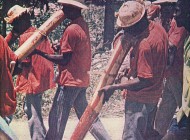 Part of the now famous Brooklyn Museum exhibit of Haitian Art in 1978, this 20 min video documentary was screened in a plexiglass theater with a wall of monitors in the middle of the galleries with the paintings and sculptures. Ra-Ra is an Easter week celebration in Haiti embracing traditional vodou ceremonies, music-making and dance that dates back to slavery.
Part of the now famous Brooklyn Museum exhibit of Haitian Art in 1978, this 20 min video documentary was screened in a plexiglass theater with a wall of monitors in the middle of the galleries with the paintings and sculptures. Ra-Ra is an Easter week celebration in Haiti embracing traditional vodou ceremonies, music-making and dance that dates back to slavery.
The spirit of Ra-Ra resides in its traditional music and dance. Preparations begin on Ash Wednesday with instrument and costume making. Bands and dancers begin traveling the roads as the ceremonies and celebrations build to a climax on Easter weekend.
Much of the music centers around the vaccine. Made from different lengths of bamboo, the vaccine is both a wind and percussion instrument.
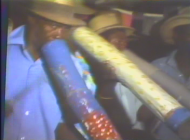 The traditional metal trumpets, batons and scrapers of Ra-Ra are made from recycled metal in the famous Iron Market in downtown Port-au-Prince.
The traditional metal trumpets, batons and scrapers of Ra-Ra are made from recycled metal in the famous Iron Market in downtown Port-au-Prince.
At voodou ceremonies in several different communities around Haiti. The houngan — voodou priest — invokes the spirits to protect the Ra-Ra bands as they travel the roads, through villages and towns. We see the houngans drawing veves – intricate geometric shapes –on the temple floors. Each spirit is represented by its own particular veve.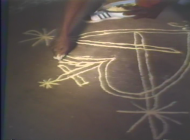
Much of the music-making and flat-footed belly-centered dancing, the sequined costumes and baton twirling can be traced to western Africa. The houngans lead their congregants in prayers to invoke the spirits’ protection and the chorus sings songs filled with political satire.
Then they’re off! The Ra-Ra band and dancers leave the hounfer to shimmy down the road, stopping to perform before people’s homes.
On Eastern Sunday Ra-Ra bands from all over the country converge at Carrefor de for, before dancing on to Leogane, partying late into the night.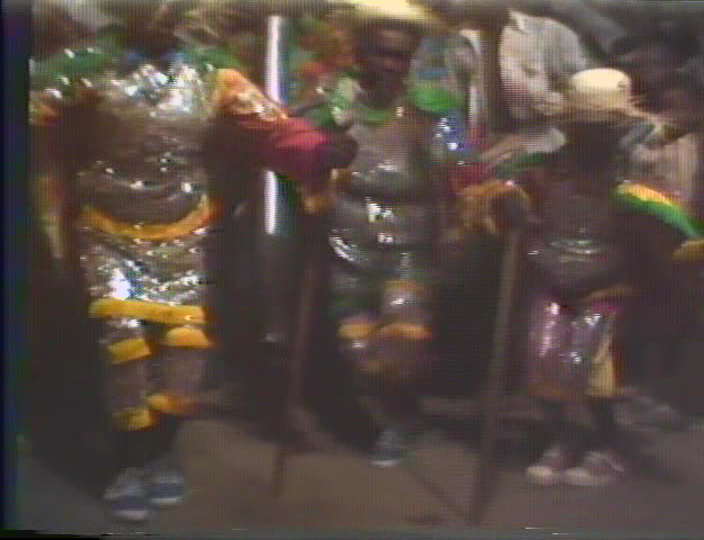
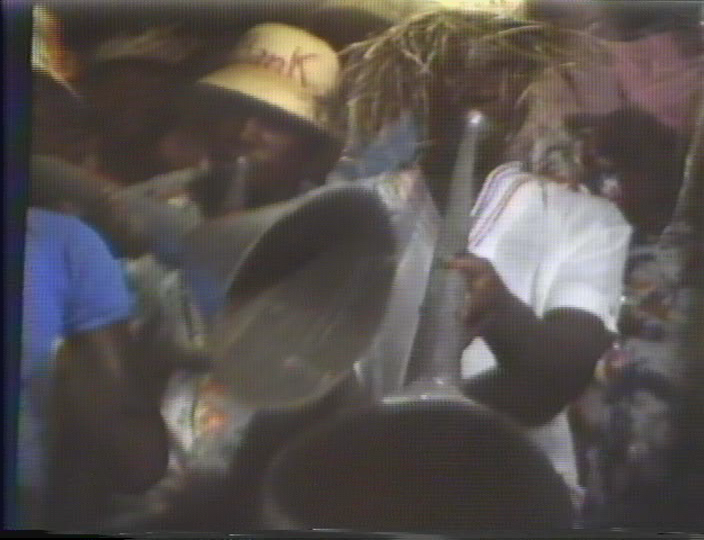
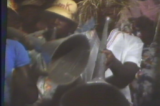

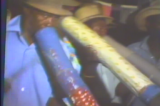
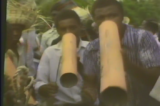
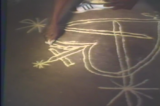
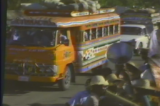

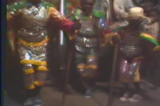
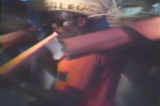
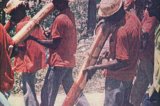
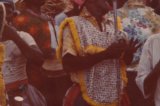
Lovely…a part of your rich history… lived and documented.
Love….
Ra-Ra and belly dancing — the perfect way to start Easter weekend — and to think the incredible creativity that is part of religious traditions. I have a picture of you filming in Haiti but had never seen this film. Thanks Gail.
We all need some RaRa to raise the spirits. Feliz Pasqua.
You are the best Gail! I remember so well when you were filming this and the wonderful show at the Museum! Always breaking new ground, always there at key moments to document, to bring important ideas to a wider audience.
I realize I’d never seen this. Wow! The production values are not nearly as “primitive” as I’d imagined. Your camera work especially – gentle pans and zooms flow naturally with the movement on screen with not of the jerky nervousness typical of novices. Well done.
PS You’re right, the deterioration of the tape does lend a marvelous painterly quality to the images.
PPS And thank you…it was via your work on this video that I first met my future wife, Karen Brown.
Andropologically valuable. Some of the videography quite painterly.
Li’L buck there you go..!!
This was fascinating, and so informative, and a pleasure to watch! And, Gail, what a beautiful voice you have – and you do it all! I was especially struck by the historical source, slavery, and how immediate it still feels. And the veve – so beautiful. The RaRa seems a wonderful mix of danger kept in tow by tradition and joy
Fabulous! So Prospect Park on Sundays, eh….. And Karen, I remember meeting her, how lovely she was.
March 30.03.2018
Great Video documentary Gail Pellett ! Difficult to be accepted ( with camera) during does ceremonies, and filming Danses and Trances ( I made the experience in San Salvador Bahia,
Candomblé Sessions) Hello from Paris with great respect for your art, Christine Ljubanovic
Great documentary Gail ! From Paris with great respect for your art ! Christine Ljubanovic
Thank you, Christine. I will get back to you soon. I am traveling in Ethiopia at moment. Best, Gail
Thank you so very much for this wonderful treasure! such a great work that you’ve been doing! Thank you! Love and blessings, Ana